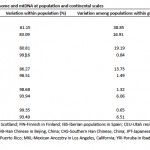
Molecular Variance Across Genetic Systems in Modern Humans and Their Kinship Structures
Gisele Horvat has kindly pointed me to this new pre-print. This post is cross-posted at www.kinshipstudies.org. Global patterns of sex-biased migrations in humans Chuan-Chao Wang, Li Jin, Hui Li. Abstract A series of studies have revealed the among-population components of…
Congenital Anomalies, Kinship Systems and Pleistocene Demography
PLoS ONE 8(3): e59587. doi:10.1371/journal.pone.0059587 An Enlarged Parietal Foramen in the Late Archaic Xujiayao 11 Neurocranium from Northern China, and Rare Anomalies among Pleistocene Homo Xiu-Jie Wu,Song Xing, and Erik Trinkaus. We report here a neurocranial abnormality previously undescribed in…
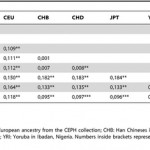
The Xavante Indians and Genetic Divergence Between American Indians and Africans
PLoS ONE 7 (8): e42702. doi:10.1371/journal.pone.0042702 Genome-Wide Analysis in Brazilian Xavante Indians Reveals Low Degree of Admixture Patricia C. Kuhn, Andréa R. V. Russo. Horimoto, José Maurício Sanches, João Paulo B. Vieira Filho, Luciana Franco, Amaury Dal Fabbro, Laercio Joel…
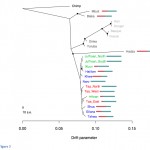
Khoisans Are Genetically Admixed and Not Basal to Other Humans, Hadza Are Recently Admixed
In my last post I discussed the ways in which phylogenetic trees constructed on the basis of genetic data confound population relationships derived from common descent and from admixture. Unless admixture is taken into account, the sampled populations may end…
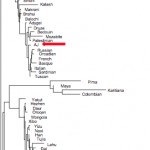
How to Interpret Patterns of Genetic Variation? Admixture, Divergence, Inbreeding, Cousin Marriage
Two different but important population genetics papers have come out. One is Steven Bray et al. (2010) “Signatures of Founder Effects, Admixture, and Selection in the Ashkenazi Jewish Population.” The other one is Isabel Alves et al. (2012) “Genomic Data…
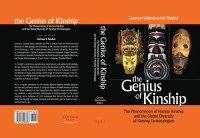

Recent Comments